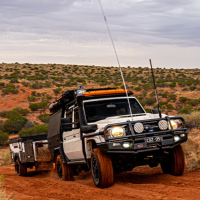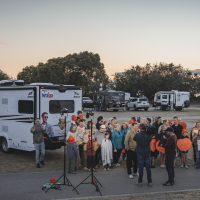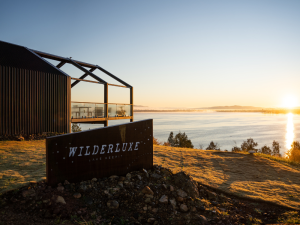


Camping in remote areas is one of the best ways to explore Australia’s vast beauty — but it’s also where preparation becomes critical, especially when it comes to medical emergencies. Whether you’re deep in the bush, on an outback track, or just far from the nearest town, having a plan can save precious time.
Here’s what you need to know before setting up camp in a remote location:
It’s a simple thing that can make a huge difference. Cuts, bites, sprains — even a basic bandage or antiseptic can be vital when help is hours away.
Find more detailed tips on Camping First Aid kits here.
As soon as you arrive, take a walk around your campsite with your phone to check for signal strength. Even if you only have ‘SOS’ access, emergency calls may still go through.
If you’re completely off-grid, identify the nearest emergency phone or ranger station before you arrive.
Tip: Download the Emergency+ app — it gives your exact GPS coordinates and helps contact the right services fast.
In areas with poor or no signage, location-based apps like what3words can pinpoint your exact location using just three unique words.
Share this info with emergency services or travelling companions if needed.

In a caravan park? Head straight to reception or find the park manager.
In the bush? Signal nearby campers, 4WDers, or hikers — they may have emergency gear or comms you don’t.
It also helps to note the direction and distance to the nearest town or medical centre when setting up camp.
When exploring truly remote areas, don’t rely on your phone alone. Consider:
These are especially useful for hikers, remote travellers, or solo adventurers.
Sudden cardiac arrest can happen to anyone. Many caravan parks, national park visitor centres, and public areas now have Automated External Defibrillators (AEDs) available.
Check if there’s one nearby, and learn how to use it — most models provide step-by-step voice instructions.

For off-grid and remote travellers, a compact AED can be a vital addition to your first aid kit. While it’s an investment, it could be lifesaving in areas where help may be hours away.
Before heading into remote areas, share your itinerary with a trusted contact. Include:
In some states, you may need to fill out a Remote Bushwalking or Trip Intention Form — check your local parks or emergency services website for details.
No one plans for an emergency — but having the right tools, knowledge, and mindset can make all the difference.
Whether it’s a scraped knee or a serious incident, being prepared means you’re never truly alone out there.
Recent Post:



Categories:
Tags:
Key Industry Partners